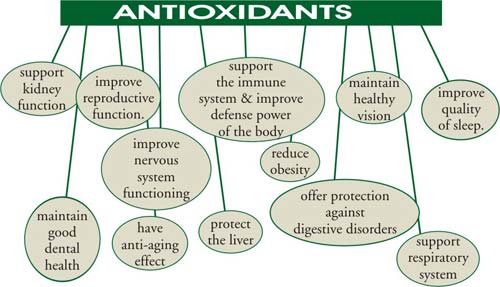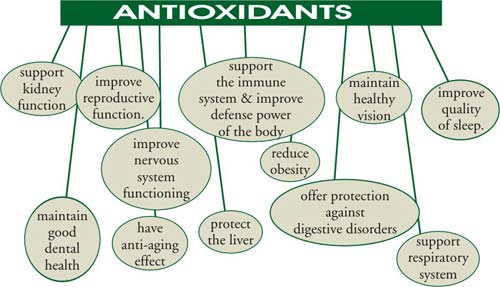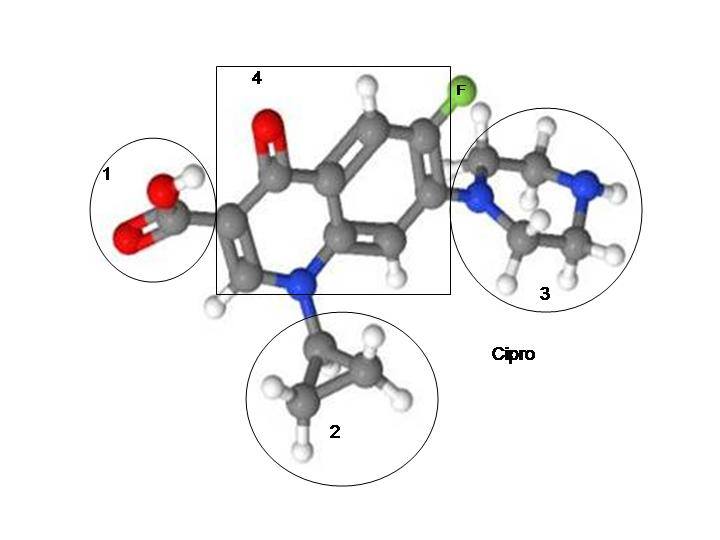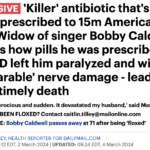
One of my favorite journal articles about the adverse effects of fluroquinolones is “Oxidative Stress Induced by Fluoroquinolones on Treatment for Complicated Urinary Tract Infections in Indian Patients” written by V. Talla and P.R. Veerareddy and published in the Journal of Young Pharmacists. It’s a pretty damning article and it’s easy to read. I highly recommend that you read it yourself. Here is the link –
http://www.ncbi.nlm.nih.gov/pmc/articles/PMC3249743/?report=printable
Even though it’s written at a level that most people can understand, there are a few terms that I’m assuming aren’t known by the average person reading this blog. So, I have taken the main points from the study, as I see them, and explained them to the best of my ability. Basically, I did the Google and Wiki look-ups so you don’t have to.
Here are the main points of the article:
1. “There is a significant and gradual elevation of lipid peroxide levels in patients on ciprofloxacin and levofloxacin dosage regimen but not with gatifloxacin.” What is lipid peroxide and do we want our levels to be high or low? Wikipedia tells us that, “Lipid peroxidation refers to the oxidative degradation of lipids. It is the process in which free radicals “steal” electrons from the lipids in cell membranes, resulting in cell damage.” (1) Basically, lipid peroxidation is not something you want going on in your body. You don’t want your lipids to be degraded via oxidation. You don’t want cell damage. Drugs that significantly increase levels of lipid peroxide are hurting you – at least on that level.
2. “There was substantial depletion in both SOD and glutathione levels particularly with ciprofloxacin.” Superoxide dismutases (SODs) “are enzymes that catalyze the dismutation of superoxide (O2−) into oxygen and hydrogen peroxide. Thus, they are an important antioxidant defense in nearly all cells exposed to oxygen.” (2) Additionally, “Within a cell, the superoxide dismutases (SODs) constitute the first line of defence against ROS.” (3) SOD is “Present both inside and outside cell membranes, SOD is one of the body’s primary internal anti-oxidant defenses, and plays a critical role in reducing the oxidative stress implicated in atherosclerosis and other life-threatening diseases. Studies have shown that SOD can play a critical role in reducing internal inflammation and lessening pain associated with conditions such as arthritis.” (4) SODs are necessary for neutralizing the oxidative damage done by reactive oxygen species (ROS) (more on ROS below).
Glutathione is also depleted by fluoroquinolones. Per Dr. Mark Hyman, Glutathione is “the most important molecule you need to stay healthy and prevent disease.” (5) Dr. Hyman notes that glutathione depletion “leaves you susceptible to unrestrained cell disintegration from oxidative stress, free radicals, infections and cancer. And your liver gets overloaded and damaged, making it unable to do its job of detoxification.” Glutathione is an extremely important antioxidant.
SOD and glutathione work together to neutralize oxidative damage done by ROS. Here is a brief description of how SOD and glutathione work together:
SOD is responsible for catalyzing the conversion of superoxide to elemental oxygen and hydrogen peroxide. This transformation is called dismutation, hence the enzyme’s name. Although hydrogen peroxide is also a pro-oxidant compound, it is subsequently converted by the enzymes catalase and glutathione peroxidase to simple water and oxygen. (4)
Without the proper amount of SOD or glutathione in your body, ROS will wreak havoc on your system, causing oxidative stress and damage to every bodily system.
3. “On the 5th day of treatment, plasma antioxidant status decreased by 77.6%, 50.5%, 7.56% for ciprofloxacin, levofloxacin and gatifloxacin respectively.” Antioxidants are molecules “that inhibit the oxidation of other molecules. Oxidation is a chemical reaction that transfers electrons or hydrogen from a substance to an oxidizing agent. Oxidation reactions can produce free radicals. In turn, these radicals can start chain reactions. When the chain reaction occurs in a cell, it can cause damage or death to the cell.” (6) Oxidation is bad, antioxidants are good, cell death is bad – we want plasma antioxidant levels to be high, not low. Decreasing plasma antioxidant status is bad for your health on a cellular level.
4. “In conclusion ciprofloxacin and levofloxacin induce more reactive oxygen species that lead to cell damage than gatifloxacin.” The researchers also note that, “Several in vitro and in vivo study using animals revealed that fluoroquinolones induced oxidative stress by producing reactive oxygen species (ROS).” ROS are described as follows:
Without oxygen, we could not exist. However, in the process of generating energy by “burning” nutrients with oxygen, certain “rogue” oxygen molecules are created as inevitable byproducts. Known as free radicals and reactive oxygen species, these unstable, highly reactive molecules play a role in cell signaling and other beneficial processes when they exist in benign concentrations. But when their numbers climb, as may occur as a result of aging and other conditions, they may wreak havoc with other molecules with which they come into contact, such as DNA, proteins, and lipids. As such, these “pro-oxidant” molecules become especially toxic.
In fact, a prevailing theory of disease and aging states that the gradual accumulation of pro-oxidant molecules, and the harm they incur, is responsible for many of the adverse changes that eventually cause various diseases. These include cancer (possibly triggered by free radical-induced damage to cellular DNA) and inflammatory and degenerative diseases such as Alzheimer’s, arthritis, atherosclerosis, and diabetes. While scientists have not yet reached consensus on the topic, accumulated evidence overwhelmingly identifies increased oxidative stress with age as a source of damage to cellular structure and function. (4)
Additionally, the wikipedia article on ROS does a nice job of explaining the damage that ROS can do – http://en.wikipedia.org/wiki/Reactive_oxygen_species
5. The authors of the study also note that, “The efforts of the endogenous antioxidant enzymes like SOD to remove the continuously generated free radicals initially increase due to an induction but later enzyme depletion occurs by 73.3% and 32.2% for ciprofloxacin and levofloxacin respectively, resulting in oxidative cell damage. Hence when the generation of reactive free radicals overwhelms the antioxidant defence, lipid peroxidation of the cell membrane occurs. This causes disturbances in cell integrity leading to cell damage/death. In the present study the repeated administration of CFX (ciprofloxacin) (recommended dosage regimen of CFX for UTI) resulted in increase free radical adduct generation by CYP450 mediated metabolism that cumulate and may result in increased ROS and substantial reduction in antioxidant defense.”
I think it’s a pretty damning article. It’s easy to read and understand. It doesn’t answer all questions about the damage done by fluoroquinolones, but it does a nice job at describing some of the issues that go on in the body when fluoroquinolones are ingested. I suggest that you bring a copy to your next doctor’s appointment.
Sources:
- http://en.wikipedia.org/wiki/Lipid_peroxidation
- http://en.wikipedia.org/wiki/Superoxide_dismutase
- Alscher RG, Erturk N, Heath LS., “Role of superoxide dismutases (SODs) in controlling oxidative stress in plants” Journal of Experimental Botany 2002 May; 53(372):1331-41. http://www.ncbi.nlm.nih.gov/pubmed/11997379
- Dale Keifer, “Superoxide Dismutase Boosting the Body’s Primary Antioxidant Defense” Life Extension Magazine. June, 2006 http://www.lef.org/magazine/mag2006/jun2006_report_sod_01.htm
- Mark Hyman, MD, “Glutathione: The Mother of All Antioxidants” 04/10/2010 http://www.huffingtonpost.com/dr-mark-hyman/glutathione-the-mother-of_b_530494.html
- http://en.wikipedia.org/wiki/Antioxidant












Glutathione is extremely important. Probably the most beneficial supplement anyone could be taking, assuming it is acetyl glutathione so their are no troubles with absorption.
A very interesting post Lisa. . Why does this make me hopeful? Pissed but hopeful. (Yes, great, radically less antioxidants and more free radicals. All the years I ate super foods down the drain.) But hopeful because I feel like i have some basic understanding about antioxidants, a belief I can influence my body in a powerful good way. Here is an interesting article about glutathione and sulfur and the human body pre-chemicals.
http://www.huffingtonpost.com/dr-mark-hyman/glutathione-the-mother-of_b_530494.html
Lisa,
You have done such a wonderful thing creating this blog and helping to share information and hope! A while back, I spent quite a bit of time researching helpful things for Cipro, Levaquin…any of the Fluoroquinolone drugs. What I found are that Glutathione IV treatments and magnesium (specifically transdermal or angstrom) are the two things helping people the most.
What I want to share with the Floxie world is that liposomal glutathione is a much, much cheaper route and many say it’s more effective than glutathione IVs. Glutathione supplements barely get absorbed by the body, but when they are encased in fat, they are about 90% absorbed.
I don’t understand why more people in the Floxie world aren’t talking about this, but my guess is that liposomal glutathione hasn’t been around for very long. Hopefully people will read this comment, or if you feel led, perhaps you can mention it in your post. I would caution people to stay away from the brands that use hydrogenated oils.
Thank you for giving me a place to share this and God bless you for all you are doing here.
Hi Thankful. Is there a specific brand of liposomal glutathione that you’ve used and/or would recommend? Thanks!
-brian
Anyone can answer Brian , please ? I have the same question. Thanks
“SODs are necessary for neutralizing the oxidative damage done by reactive oxygen species (ROS)”
Is this means that ozone therapy is bad?
I’ve used since April (bought through chiropractor) ReadySorb liposomal G. And also ApexEnergetics AC-Glutathione (S-Acetyl-Glu..) with their recycler. Bulletproof coffee brand (Dave Asprey) supplements also has a glutathione, along with unfair advantage for mitochondria which is another piece of the floxie puzzle. I looked into the above post from glutathionePro. I first took a test by OxiData (thru chiro) that showed my levels were depleted.
… [Trackback]
[…] Find More to that Topic: floxiehope.com/antioxidant-depletion-by-fluoroquinolones/ […]
… [Trackback]
[…] Find More to that Topic: floxiehope.com/antioxidant-depletion-by-fluoroquinolones/ […]
… [Trackback]
[…] Information to that Topic: floxiehope.com/antioxidant-depletion-by-fluoroquinolones/ […]
… [Trackback]
[…] Read More Information here on that Topic: floxiehope.com/antioxidant-depletion-by-fluoroquinolones/ […]
… [Trackback]
[…] Here you will find 4200 additional Info on that Topic: floxiehope.com/antioxidant-depletion-by-fluoroquinolones/ […]
… [Trackback]
[…] Here you will find 30852 more Info on that Topic: floxiehope.com/antioxidant-depletion-by-fluoroquinolones/ […]
… [Trackback]
[…] There you can find 20716 more Information on that Topic: floxiehope.com/antioxidant-depletion-by-fluoroquinolones/ […]
… [Trackback]
[…] Read More here on that Topic: floxiehope.com/antioxidant-depletion-by-fluoroquinolones/ […]
… [Trackback]
[…] Info to that Topic: floxiehope.com/antioxidant-depletion-by-fluoroquinolones/ […]